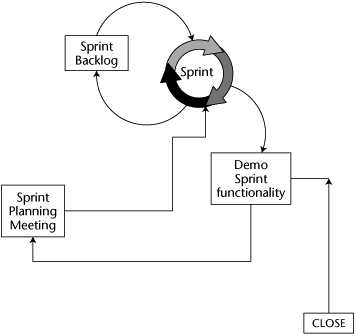Iterative SDPM Strategy for the Closing Phase of the SCRUM Model
Figure 22-3 illustrates the Closing Phase of the SDPM strategy for the SCRUM model.
Figure 22-3. The Closing Phase of the SDPM strategy for the SCRUM model

The SCRUM model is customer-driven. At the completion of each sprint, the customer (“Product Owner” in SCRUM terminology) interacts with the current version of the solution through a demo of it. New features and functions may be identified at that time and added to the Product Backlog to be prioritized by the Product Owner. The deliverables from each iteration are not processed through any formal type of Closing Phase. That is reserved for what becomes the final version of the solution. The final version is the last version completed before either the budget has been expended or the time box for the project has run out. The Closing Phase is formal to the extent that the Product Owner accepts the current solution as the solution that can be released to the end users. There are no formal acceptance criteria for the Closing Phase of the Iterative SDPM strategy for the SCRUM Model. Sprints continue until the product is releasable by the Product Owner. Once deemed releasable, the product then goes through another SCRUM project to turn it into a releasable product.
During the project, there are two types of lessons learned to discuss: the Sprint Planning Meeting and ...
Get Effective Software Project Management now with the O’Reilly learning platform.
O’Reilly members experience books, live events, courses curated by job role, and more from O’Reilly and nearly 200 top publishers.

